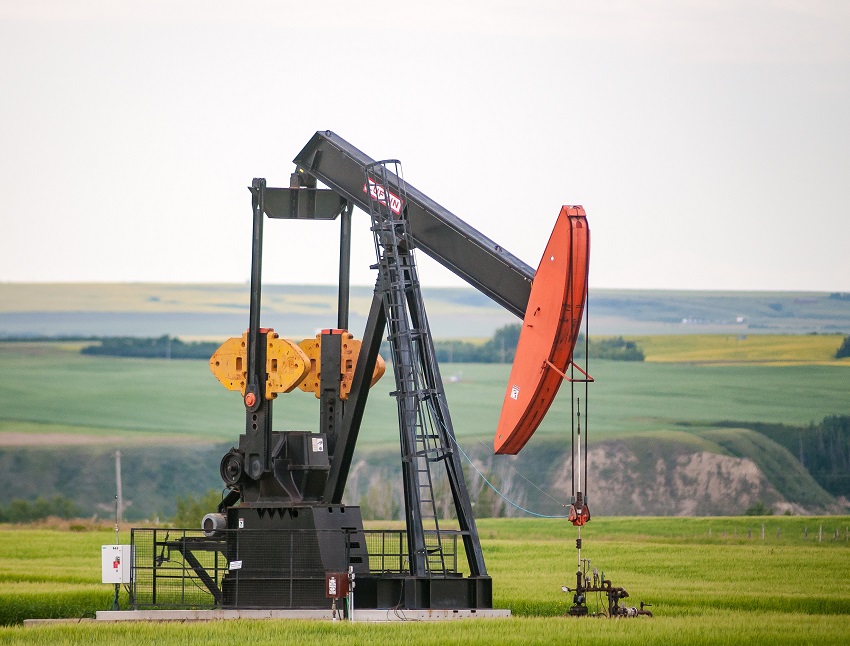
Crude oil prices had been on an upward trajectory since the beginning of the year, but a recent decline doesn’t capture demand-supply dynamics around the corner.
From the start of the year to June 1, the price of oil rose to US$113 per barrel West Texas Intermediate from US$73 (WTI). But since early June it has slipped to the high US$90s, thus reflecting the market’s worries about a global economic slowdown as well as the impact of Russia’s invasion of Ukraine. Nevertheless, while energy and resource specialist Brahm Spilfogel, co-manager of the $245.1 million 5-star gold-medallist RBC Global Energy Fund D, acknowledges the current challenges, he remains upbeat, especially about the longer-term view.
“The falling oil price is a reflection of slowing demand or possibly a mild recession, driven by a whole bunch of things: rising interest rates globally, the Ukraine-Russia war which is creating power issues [in Europe], and the world is worried about how deep the recession may be in Europe,” says Spilfogel, vice-president at Toronto-based RBC Global Asset Management Inc., and a 31-year industry veteran who graduated from McGill University in 1991 with a bachelor of commerce. “We also have quantitative tightening, which affects financial instruments. Yes, the price decline is a reflection of these issues.”
Price Decline is not Predictive
Where the oil price goes from here is difficult to predict. But based on expectations of a mild recession, Spilfogel says that the oil price may slip back to the marginal cost of supply of around the US$60-70 range. “But this time could be a bit different. There is razor-thin spare capacity within the Middle East and it could be under 2% by 2023, which is really low,” says Spilfogel, who shares duties with Chris Beer, vice-president and senior portfolio manager, and Jeffrey Schok, portfolio manager. “Meanwhile the sanctions against Russia have not even hit,” says Spilfogel, “If sanctions do bite, we will see Russian supply decline and there’s very little spare capacity left. We may not get down to those marginal cost numbers this time around.”
“The third factor,” he continues, “is what we have seen for over three years, is that reinvestment rates have been inadequate because of the energy transition theme of the industry moving away from carbon, and more into renewables. There’s also been an under-investment of around 30% to 40% over the last few years as management teams have turned their focus to rates of return over growth. This has meant that supply growth has been weaker than expected,” says Spilfogel, adding that six months out the crude oil forward price is in the high US$80s. “It’s very murky trying to predict where the oil price may go [in the short term]. My best guess is that we may drop to the mid-US$70s, but it doesn’t stay there very long. Longer-term, we are quite positive on the oil price for the next five years. Commodities are cyclical and when you have demand destruction, prices tend to go down.” Inventories in the oil and gas sector are very low, adds Spilfogel, and he does not expect a fall-off in demand to cause any meaningful impact on inventories.
Energy’s Better in Recessions
Despite the short-term equity market weakness, Spilfogel argues that during recessions the oil and gas sector has outperformed the broader market on average since the 1980s, but with wide dispersions, or greater volatility. “This time around, since balance sheets are in excellent shape, and valuations are very attractive and cash flow yields are from the mid-teens to 20%, depending on market cap size, we think the group will likely outperform the market going forward,” says Spilfogel. “Balance sheets are in great shape and many companies don’t have a lot of debt. Because we have seen multiple compression in the sector this has created very high free cash flow yields. They are almost value stocks in a way. I don’t think you will see more valuation compression. Obviously, you may see earnings downgrades. But because balance sheets are excellent and inventories are low, the oil and gas sector will probably lead the market on the way up when we get an all-clear on the economy.”
Currently, Spilfogel notes, energy stocks are trading between three- and four-times cash flow. “Historically, they were up in the six, seven- and eight-times cash flow range. We have seen a massive depression in multiples. Because of the energy transition, the market does not believe any longer in the longevity of the assets. To some degree, it’s become a ‘sunset’ industry. But in our view that ‘sunset’ will be quite long,” says Spilfogel, adding that it will take decades for the world to transition away from carbon-based fuels to renewables and non-traditional energy sources.
Year-to-date (July 22), RBC Global Energy Fund D has returned 24.35%, versus 19.25% for the Energy Equity category. Over the longer term, the fund has returned an annualized 11.10% over three years and 7.00% over five years. In contrast, the category returned an annualized 12.97% and 5.00% for the same periods.
Expanding Gas Coverage
“The sector is more volatile, as cyclical industries can be. But over the last few months, we have significantly taken down the risk in the fund. We are ‘way more defensive, relative to our global benchmark [MSCI World Energy C$]. We have picked our spots where we either have a positive long-term view of a company or some companies that have more exposure to natural gas, which tends to have much lower economic sensitivity.”
Spilfogel notes that the gas shortage in Europe is a kind of warning across the bow urging Europe to diversify its energy sources away from Russia. “We think that North America and the Middle East will be longer-term winners over the coming decades. That’s a theme that we are trying to position for the benefit of our unit-holders,” says Spilfogel, adding that it may take until the end of the decade for North American liquefied natural gas (LNG) capacity to be increased to meet European demand.
Spilfogel argues that over the last five years the energy sector has been tossed out like the proverbial “baby with the bath water,” and seen a serious compression of valuations. “And yet they [companies in the sector] are generating very high cash flow multiples, post capital expenditures. This gives them the ability to either pay down debt, buy back shares and/or pay dividends. If I can get the future cash flow for free, then I love that. That’s where we are: we are getting a lot of free cash flow for free.”
Sustainability’s Slow but Steady
When it comes to ESG (environmental, social and governance), Spilfogel concedes the energy industry has been slow to address ESG concerns. “They have always been very good in dealing with environmental regulatory and safety concerns, particularly in North America. But they have been slow in dealing with emissions. In the last two years, they have done a lot of catching up and they have still more to do. But they certainly are making strides in, for example, reducing emissions through methane capture. By 2030, most of the industry has committed to a reduction of between 20% to 50% of Scope 2 carbon dioxide emissions. We are in the fourth inning with this, but it will be incrementally positive as each year goes by.”
From a strategic viewpoint, about 45% of the portfolio is held in so-called integrated energy firms, 28% in transportation, refining and marketing firms, 22% in exploration and production companies (E&P) and 5% in cash. On a geographic basis, 50% of the fund is invested in the U.S., 22% in Canada, and the balance in a mix of European and Asian firms.
Top Stock Picks
Running a high conviction portfolio of 35 names, Spilfogel cites top holdings such as ConocoPhillips (COP), a U.S.-based E&P firm that produces about 1.7 million barrels a day. “Their plan is to grow 3-5% a year, compounded. They have a good management team and well-diversified global production. They have an achievable emissions reduction program and good alignment between management and shareholders,” says Spilfogel, noting the stock pays a 2.34% dividend.
COP’s valuation is in line with five years ago, he notes, and the firm’s return on equity is around 15%. The stock trades at four times cash flow and a 20% discount to intrinsic value. Based on 3-5% annual production growth, share buybacks and dividends, the shares have an estimated longer-term return of about 8%.
Another favourite is Shell PLC (SHEL), a UK-based integrated firm with extensive global assets which produces about three million barrels of oil equivalent a day, of which 1.7 million is oil. “They are transitioning away from oil to natural gas,” says Spilfogel, adding that Shell is one of the world’s largest LNG traders.
Importantly, Shell will be buying back up to 10% of its float. “There isn’t huge [production] growth here, but I like the fact that the share count is being reduced. They may even raise their share buyback in 2023. They are also committed to getting to net zero by 2050. In general, I like their large LNG exposure,” says Spilfogel, adding that the shares trade at three times cash flow. “I like them because I get the future for free.” The stock also pays a 4% dividend.









.jpg)












